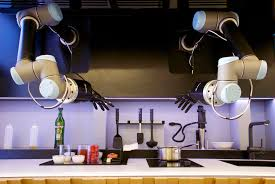Google Home and 14 other gadgets for your household
Remember – just a few years ago – when the release of a refrigerator with a light that advised when you were low on milk, was one of the biggest stories on the news?
Today – fridges come with up to three internal cameras and an app so you can check whatever else you’re low on while at the supermarket.
That’s assuming you don’t want the fridge to re-stock itself via an online shop. Some of them do that too.
The house of the future is here, with gadgetry, much of it WiFi connected, now available for every room – including the loo.
Sustainability and convenience are amongst the drivers creating “smart” technology. We take a look at some of the products making (electromagnetic) waves:
Google Home
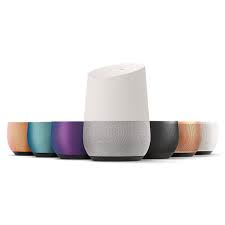
Releasing in Australia tomorrow, Google Home is a voice-activated gadget which might remind some users of Apple’s Siri.
By starting a sentence with the command “OK Google”, users can instruct the machine to undertake a variety of functions including making appointments, operating appliances, playing music and reading news. It can also control the temperature and lock your doors.
Google Home, which will not work without an internet connection, has been priced at $199.
Household robots

Need an extra set of hands in the kitchen? Enter Moley – household robotic aide.
Moley will chop onions without tears. It can fetch and put away appliances, follow recipes – and even plate up food (to the point of decorating sauces as shapes).
It’ll also wash up after itself.
It won’t do the vacuuming, but that’s OK – there’s a concept for that chore too. The Instinct Vacuum Cleaner is a robotic, four-legged device, which creates itself a 3D model of the room before starting to clean.
Instinct is an advance on the commonly available robot cleaners available in most department stores at the moment which vacuum at random or in a zig-zag pattern, using sensors to avoid hitting obstacles, and are on wheels.
Robots have also recently been introduced to tackle other household chores like ironing, gutter cleaning, lawn mowing – or emptying a cat litter box
Not an early bird? The Nanda Clocky alarm clock robot is on wheels. It will give you one chance to snooze before driving off, forcing you to get out of bed and find it, to shut it up.
Swank loos
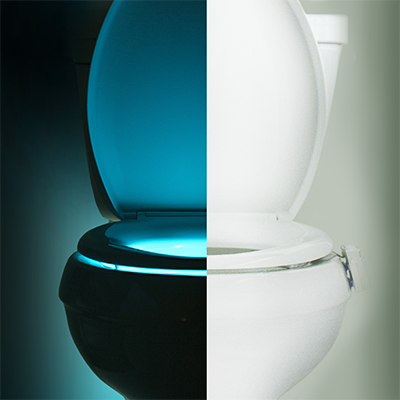
The blinding horror of switching on a bathroom light in the nocturnal hours might be no more – care of night illumination technology offered in some of the latest loos. Yes, this means your toilet will light up when you approach it.
A variation which can be fitted to your current toilet is available from many suppliers – some who market it as a safety measure, others as a must-have for your house-party. The device is also marketed to parents as a fun way to train their kids to use a toilet at night.
Smart bathroom scales
Bathroom scales have evolved, too with “smart” variants able to measure things like your body fat and heart rate.
Connect it to an app on your phone and some machines will estimate the calories you consume – and whether you’ve had too many.
Some scales can also be connected to fitness trackers, be it on your mobile, tablet or computer.
One company – QardioBase – produces a model with a pregnancy mode that cuts off impedance (an electric impulse which is used to estimate the body composition, used in many other digital scales).
Elsewhere in the bathroom
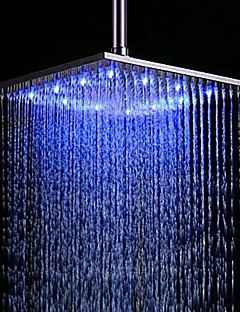 Some energy saving shower heads now have coloured LED lights to gauge water temperature, so you don’t waste time getting in.
Some energy saving shower heads now have coloured LED lights to gauge water temperature, so you don’t waste time getting in.
Smart mirrors receive news and weather updates to provide you advice about what to wear that day
Kitchen aides
Remote control kitchen appliances? Yes please. Smart Slow Cookers powered with WeMo technology can be turned on from work, and monitored throughout the day, to make sure dinner is waiting as soon as you walk through the door. The cooking time and temperature can be adjusted remotely.
Smart fridges allow you to monitor food supplies while away from home. Some new fridges have big touchscreens which dub as television monitors.
Outside of the kitchen – voice-assisted technology allow users to turn off the lights, lock the doors, or adjusting the temperature, simply by asking.
Improving the personal environment
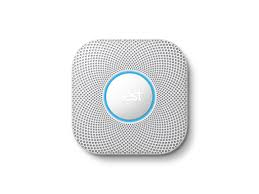
So confident is IT giant Google that consumers will rely on technology to improve their household environment – that it forked out more than $3 billion in 2014 for Nest Labs, with product lines including smoke alarms and security cameras.
The Nest Thermostat is one of the company’s most popular home products. It allows users to control a home’s temperature remotely, via an app. After continued use the product, which uses sensors and communicates with mobile phones – can adjust the climate according to learned preferences of each individual in a household.
The Nest Protect smoke alarm can detect smoke and increasing CO levels and relay messages to your phone, if you are not home. It self-tests its battery up to 400 times a day which, according to its website, shouldn’t need replacing for a decade.
Another company, Netatmo, makes a sophisticated weather station which monitors wind and rain conditions – potentially saving an unnecessary watering of the garden.
Light switches
You probably didn’t think your current light switch was loud or inefficient – but it is, compared to the range of new products available.
Smart light switches, including the iotty, can regulate multiple lights in the house from each of its touch-screen wall-points. From an app, users can create individual settings – like a mood light. It can also be programmed to turn on and off in the morning and evening.
Added to that, smart lights are a security measure – able to activate at random to give the impression you are home, when you are away.
Security
You won’t need a key to access the house of the future.
Smart locks allow you to unbolt the door using, amongst other things, your phone, remote fob, or key tag. Smart locks are typically connected to CCTV security systems – the modern versions of which allow you to adjust home settings like turn on the lights or television, as well as record potential intruders.

